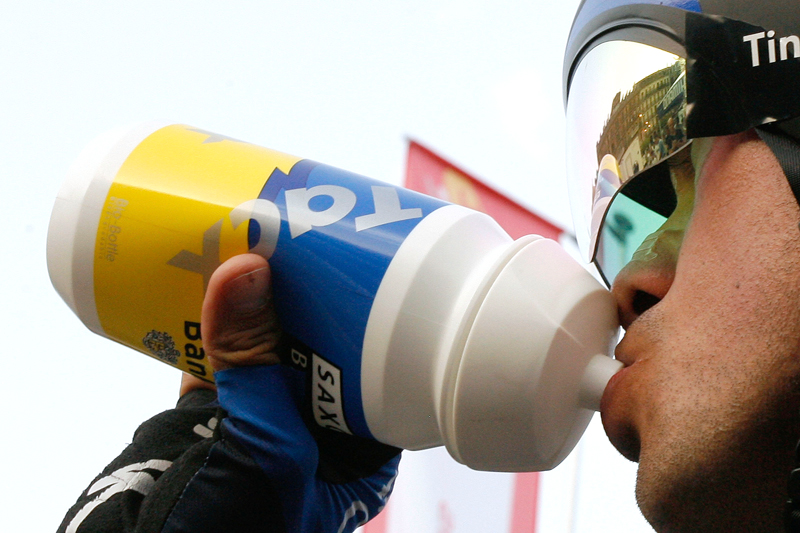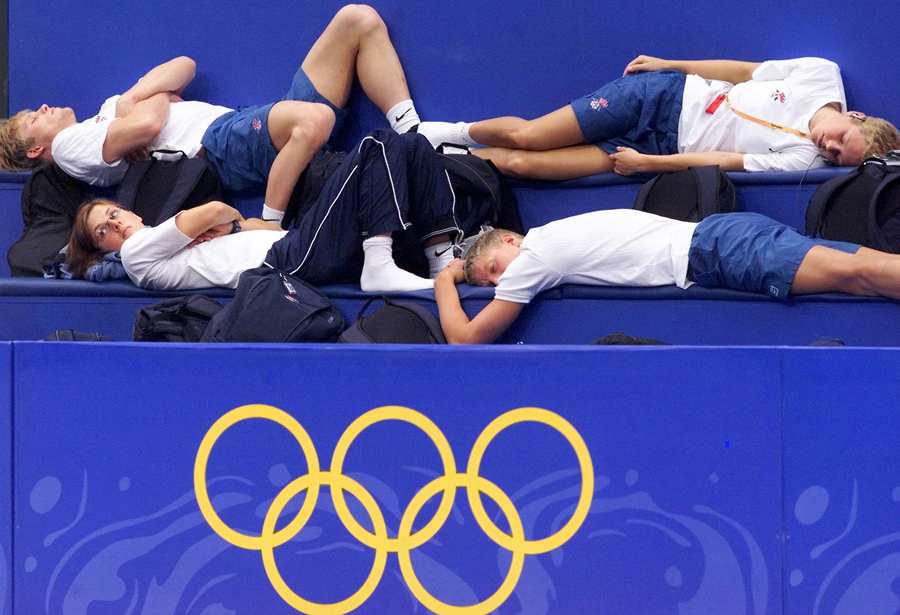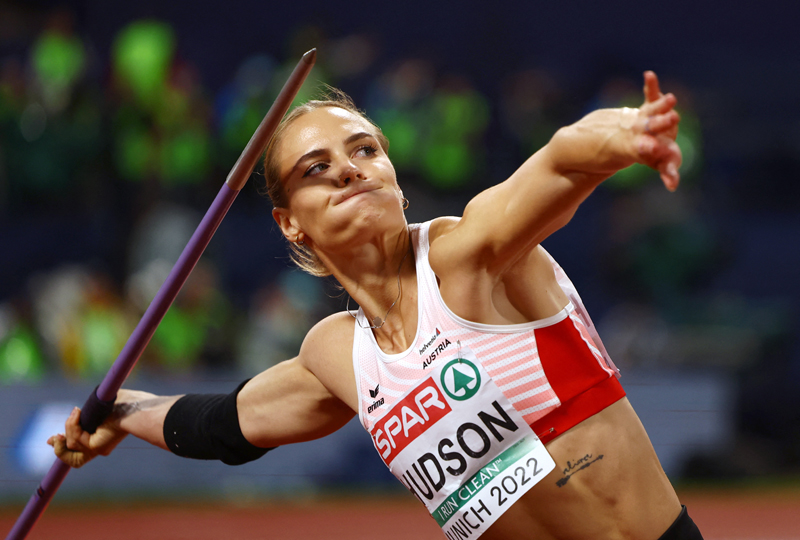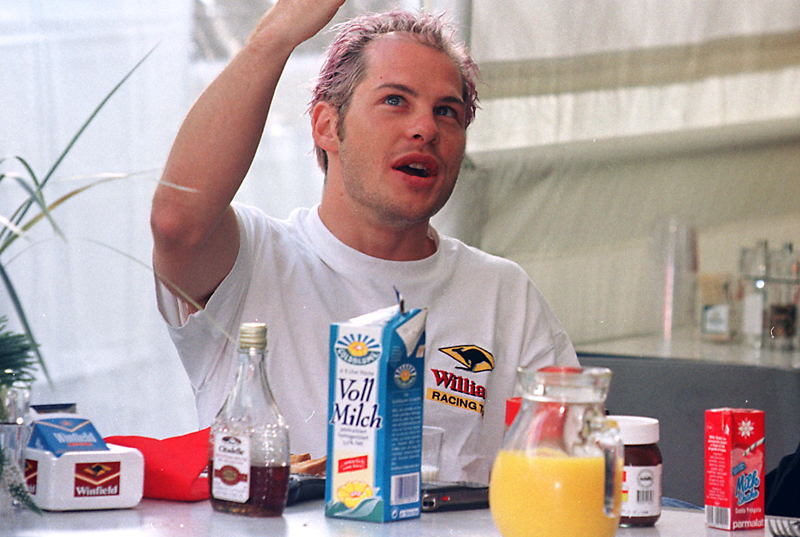New research suggests that optimum hydration is not just about ‘drinking plenty’ and hoping for the best. It actually requires a good deal more thought. Andrew Hamilton explains
Lies and damn lies?
Although the importance of maintaining hydration in sport is relatively straightforward compared to other aspects of sports nutrition, and has been studied for longer than just about any other area, new research continues to turn up surprising findings. A good example of this is the controversy that currently surrounds the advice given to athletes wishing to maintain optimum hydration. Official advice to athletes to drink enough to replace fluid lost in sweat during endurance events is coming under increasing attack from scientists. In 2006, the renowned exercise physiologist Professor Tim Noakes claimed in a hard-hitting leading article in the British Journal of Sports Medicine that the case against ‘over-drinking’ was proven 20 years earlier and that official advice has been influenced by the marketing needs of the sports drink industry(1). Meanwhile, Australian researchers called on the American College of Sports Medicine (ACSM) and other official bodies to revise their current fluid replacement guidelines in the light of their recent finding that even quite large fluid losses don’t lead to dehydration or heat illness(2).The Australian researchers set out to measure core temperature in 10 participants in the 2004 Ironman Western Australia event (using a special telemetry system swallowed in a pill), and to relate this to the triathletes’ hydration status after the event. In particular, they wanted to test two theories:
1. That the progressive dehydration commonly experienced by Ironman triathletes (reflected in body weight reduction) would be linked with rises in core body temperature;
2. That the athletes’ bodies would adequately regulate their own body temperature and that no relation would be found between finishing hydration status and core body temperature.
What they discovered surprised them; while fluid losses led to an average fall in body mass of 2.3kg (about 3% of body weight), the athletes’ core body temperature averaged only a modest 1˚C above normal resting temperature, while other measures of dehydration, including plasma levels of sodium and urine concentration, stayed within normal ranges.
The inescapable conclusion was that there was simply no evidence that a 3% reduction in body mass during an Ironman competition in moderate ambient conditions causes athletes to reach the kind of core body temperatures that would lead to heat stroke. This appears to conflict with the ACSM guidelines advising ‘endurance athletes to drink to replace the total amount of fluid lost in sweat and not to rely on thirst as a guide to their fluid needs’. The ACSM’s ‘Hydration Consensus Statement’ published in 2005 and still featured as current best practice on its website at the time of writing (December 2007) states the following(3): ‘A body water deficit of greater than 2% of body weight marks the level of dehydration that can adversely affect performance.’
In a commentary on the Australian findings described above, Professor Noakes wrote: ‘This confirms that the body regulates its thermal response during prolonged exercise within a very safe range, independent of the extent of weight lost. Ironman triathletes can be assured that their brains will take care of their bodies during exercise, and that there is no need to follow industry favourable guidelines to drink to excess to ensure their safety.’ Indeed, he went on to add: ‘“over-drinking” is not only unnecessary to maintain thermoregulation, but it could also put people at risk of hyponatraemic encephalopathy – a life-threatening dilution of plasma sodium levels.’
However, it’s important to add a significant caveat here, namely that the levels of hydration required for safety and for optimum performance may not be the same. One could equally ask whether those 10 subjects competing in the Australian Ironman could have performed better if they had consumed more fluid and reduced their dehydration levels.
Table 1: Physiological effects of dehydration on the human body
Running economy and dehydration
The Australian findings (that 3% dehydration produced little in the way of adverse effects) were somewhat surprising for those weaned on the conventional ‘hydration maintenance wisdom’. However, later that year, a US study looked in to the effects of 5% dehydration (ie quite severe) on running economy(4). Running economy refers to the biochemical and biomechanical efficiency of running; for any given running speed, the lower the oxygen requirement to maintain that speed, the greater the running economy.In the study, 10 highly trained collegiate distance runners (mean age 20yrs, mean body mass 66.7kg, mean VO2max [maximum oxygen uptake] 66.5mls/kg/min) participated in four experiments on separate days; two trials were performed in a fully hydrated state and two in a dehydrated state (a water loss corresponding to 5.5 and 5.7% body mass – ie about 3 litres).
In each hydration state (ie fully hydrated and 5% dehydrated), the subjects performed one 10-minute treadmill run per day (in an ambient temperature of 23˚C environment) at either 70% VO2max or 85% VO2max. The researchers measured a number of variables including hormone levels, body temperature, cardiovascular function and perceived rates of exertion.
The results were surprising to say the least; there were no significant differences in running economy between any of the combinations of hydration states and workloads. Likewise, there were no differences in perceived rates of exertion or in post-exercise lactate concentration. However, the 5%+ dehydration did result in higher heart rates, rectal temperatures and blood levels of a hormone called norepinephrine (associated with stress) indicating an increased physiological strain.
Why is this surprising? Well think about it; 5% or more dehydration is very severe – a water loss of two and a half times that commonly accepted to be the threshold of reduced performance (see table 1). Moreover, studies have shown that running economy is normally fairly sensitive to physiological disturbances, dropping significantly when fatigue sets in. To achieve 5% dehydration in reasonably temperate conditions, a runner would have to run for long periods beyond the 2% dehydration point that is claimed to produce significant performance drop. Some caution is needed – this is just one study and in longer runs, 5% might produce higher core temperatures than were measured here – but this study does lend support to the notion that the commonly accepted guidelines on drinking and hydration need revisiting!
Dehydration and motor skills
Just to throw a spanner in the works, however, some recent evidence suggests that the 2% dehydration threshold may be relevant for sportsmen and women participating in sports where complex motor skills are important.In a double blind, randomised study on basketball players at Pennsylvania State University, US scientists set out to investigate the effects of three hydration strategies on 15 basketballers (age 12 to 15 years) who underwent three separate two-hour exercise sessions in hot conditions with different drinking strategies(5):
1. No drinks consumed leading to 2% dehydration (loss of fluid equivalent to 2% of body mass);
Dehydration and strength
Some recent and fascinating research carried out at the University of Connecticut studied the effects of dehydration on the hormonal response to training – specifically the levels of testosterone, cortisol and the testosterone/cortisol (TC) ratio(8). This ratio is important for any athletes wishing to maintain muscle mass for increased strength and power and/or reduced injury risk; testosterone is an anabolic hormone associated with muscle accretion while cortisol is a stress hormone associated with high energy demands and muscle tissue breakdown.Nine collegiate runners completed four 10-minute treadmill runs differing in pre-exercise hydration states. These were:
Fully hydrated at 70% VO2max
Fully hydrated at 85% VO2max
5% dehydration at 70% VO2max
5% dehydration at 85% VO2max
Blood samples were taken immediately after and again 20 minutes after exercise and analysed for lactate, testosterone, cortisol, and T/C ratio.
The results showed that for a given intensity, heart rates, VO2max and blood lactate were similar between fully hydrated and 5% dehydrated states, suggesting that (remarkably) dehydration did not measurably increase the physiological stress associated with dehydration of the exercise bouts. Furthermore, the hydration state of the runners had no measurable effect on testosterone concentrations before, during, or after exercise at either intensity.
However, regardless of exercise intensity, pre-exercise and 20 min post-exercise cortisol concentrations were greater during 5% dehydration full hydration and the resulting T/C ratio was lower, indicating an increased likelihood of muscle tissue catabolism (breakdown). In plain English, running (or performing other types of exercise) while in state of dehydration caused an unfavourable shift in the resulting hormone balance, by producing a more catabolic environment compared to full hydration. And as we’ve already stated, catabolism is something that most athletes try to minimise!
2. Consumption of a 6% carbohydrate/electrolyte drink to maintain hydration levels (ie 0% dehydration);
3. Consumption of a flavoured water placebo drink to maintain hydration levels, but with no added carbohydrate/electrolyte.
After each exercise session, there followed a recovery period after which the subjects performed an orchestrated sequence of continuous basketball drills designed to simulate a game (12-min quarters with a 10-min halftime. The researchers looked at a number of performance measures and component drills required during basketball; these included various individual and combined shooting percentages (3-point, 15-foot, free-throw shots), sprints (suicides, court widths), lateral movements (zigzags, lane slides), and defensive drills (combining lateral and front-to-back movement) times.
Compared with the flavoured water drinking strategy, 2% dehydration significantly impaired shooting ability. However, consuming the carbohydrate/electrolyte drink improved shooting compared with flavoured water. Moreover, the carbohydrate/electrolyte drinking strategy significantly improved total defensive drill times compared to no drinking.
These results (produced by 2% dehydration) appear to be at odds with the Australian research quoted earlier, showing that 3% dehydration put Ironman athletes at no significant risk of heat stroke. In reality, however, these two findings aren’t necessarily contradictory; ‘no increased risk of heat stroke’ is not the same as ‘optimum physical performance’. Moreover, the basketball study looked at performance indicators (eg shooting) that involve a significant motor skill component; had the researchers tested only the basketballers’ endurance or strength, they may have found that 2% dehydration produced no adverse effects.
Making sense
On the face of it, there seems to be a lot of conflicting information in some of the recent research, but it’s actually quite possible to make sense of it all. Let’s just summarise the main points raised here:Safety – the current evidence suggests that even 3% dehydration for sustained periods doesn’t pose a health risk for athletes; Over-drinking to ensure you lose no fluid at all during training or competition therefore seems unwarranted;
Performance – this is where it gets tricky. 5% dehydration didn’t seem to adversely affect running economy and perceived rates of exertion at 70 and 85% of VO2max (although it did increase levels of circulating stress hormones). However, a more modest 2% dehydration did adversely affect basketball skills; it could be that athletes performing sports where skill is a major factor are more prone to the detrimental effects of relatively mild dehydration;
Power to weight ratio - in sports such as cycling and running, where power to weight ratio is important, the potential benefits of dehydration-induced weight loss could well be outweighed by performance drop – certainly, 3.5% dehydration appears to be detrimental to endurance performance;
Strength and power – dehydration at 3%(4) and 5%(8) seems to increase levels of circulating stress hormones, which is undesirable for any athlete wishing to maintain or build maximum strength and power. There are also implications here for immunity, as exercise-induced stress hormone release is known to be associated with decreased post-exercise immunity(9).
It’s also noteworthy that the use of water alone did not improve drill times compared to no drinking – ie 2% dehydration did not adversely affect performance. In fact, it was only the carbohydrate/electrolyte drink that improved drill times, indicating a positive ‘carbohydrate feeding effect’. This is in line with other research demonstrating that carbohydrate administration has a positive effect on cognitive processing and motor skills(6).
More recent evidence of dehydration drawbacks
Some researchers have cautioned against ‘over-hydration’. The argument is that not only is 100% fluid replacement unnecessary for performance gains, it may even be detrimental. The reasoning is that mild dehydration doesn’t hinder performance and may even boost performance in sports where overcoming gravity is important (eg uphill cycling, running, field sports etc). So for example, a 70kg athlete who becomes 2% dehydrated will lose 1.4kg of water, which means he or she will weigh 1.4kg less. This means 1.4kg less to lug around and a potential 2% increase in power/weight ratio. Or to put it another way, less power output will be required for a given speed.But is this theory borne out in reality? That’s the question that Australian scientists at the Australian Institute of Sport in Canberra set out to answer in a recent study on simulated uphill cycling in the heat and dehydration due to unreplaced sweat losses(7).
In the study, eight well-trained cyclists performed a two-stage ride:
Stage 1 – a two hour ride at 53% maximal aerobic power (MAP) on a stationary ergometer;
Stage 2 – a cycling hill-climb ‘time-to-exhaustion’ trial at 88% MAP on their own bicycle on an inclined treadmill (8%) at approximately 30˚C.
Stage 1 was potentially dehydrating; however, some of the subjects were given 2.4 litres of a 7% carbohydrate drink during stage 1 (designed to replace fluid losses), while others were given an identical amount of carbohydrate but in the form of gels with just 0.4 litres of water. The net result was that both groups received identical carbohydrate, but the drinks group ingested an extra two litres of water compared to the gels group. This in turn meant that the drinks group went into the hill-climb trial with virtually no net fluid loss compared to their pre-trial status, whereas the gels group showed a net weight loss of about 2.5kg (ie about 3.5% dehydration).
The results revealed the following:
l Rectal temperatures before the hill-climb increased by 0.6C (38.9 vs 38.3C) in the dehydrated (gel) group compared to the hydrated (drinks) group;
Heart rates increased by 12 beats per minute (158 vs 146) in the dehydrated group compared to hydrated group;
Last but not least, despite the fact that the dehydrated cyclists were significantly lighter (about 2kg) than the hydrated cyclists and therefore required less power to sustain a given speed uphill, their time to exhaustion was drastically reduced; compared to the hydrated cyclists, those who were dehydrated achieved times to exhaustion that were 13.8% lower!
Now, 3.5% dehydration is not mild; it is way beyond the ‘2% threshold’ often quoted for performance losses. However, this study does indicate that in sports where work is performed against gravity, it’s erroneous to assume that the reduction in weight that occurs when fluid losses take place will automatically result in enhanced performance due to an increased power/weight ratio. More research will be needed to determine at what point any performance gains to reduced weight via fluid losses are wiped out by performance losses due to the physiological effects of dehydration itself.
In the light of all of the above findings, what is the best hydration strategy to maximise performance and minimise any detrimental effects? Athletes whose sports involve a large skill component should ensure that they remain well hydrated; 2% fluid loss may be too much to maintain optimum performance and a target of maximum fluid loss of 1% of body weight may be a better option. Endurance athletes may get away with up to 2% fluid loss, but any higher may put them at risk of reduced performance, even allowing for a potential gain in power to weight ratio.
Given the link between dehydration and stress hormone release, strength and power athletes should pay particular attention to remaining well hydrated. In fact all athletes should endeavour do so when training; the odd foray into the dehydration zone may be harmless in competition, but regular episodes of dehydration during training (where it’s relatively easy to control your fluid intake) are undesirable.
Andrew Hamilton BSc Hons, MRSC, ACSM is a member of the Royal Society of Chemistry, the American College of Sports Medicine and a consultant to the fitness industry, specialising in sport and performance nutrition










